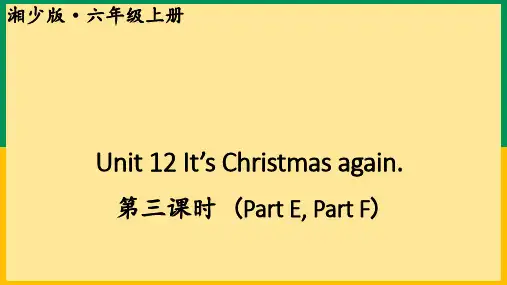湘教版(三起)英语六年级上册全册课件
- 格式:pptx
- 大小:61.23 MB
- 文档页数:354
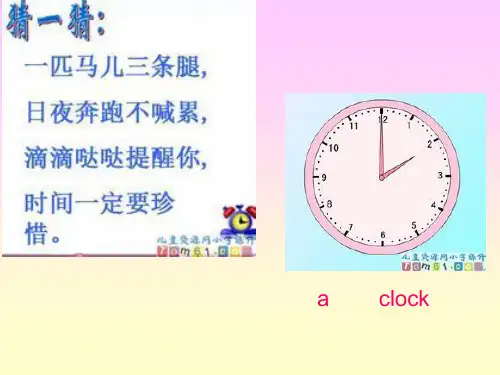
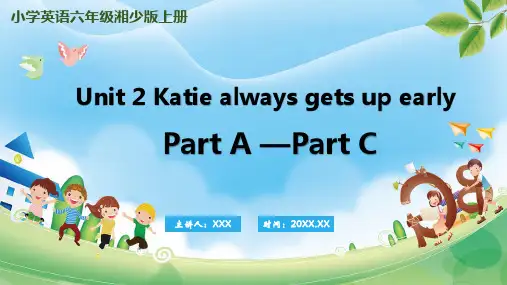
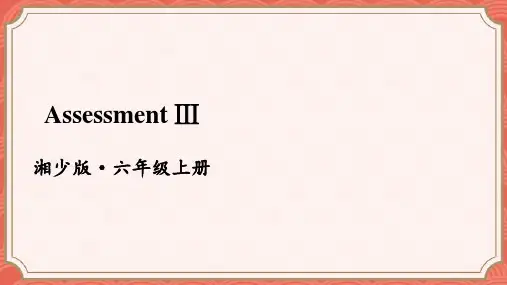
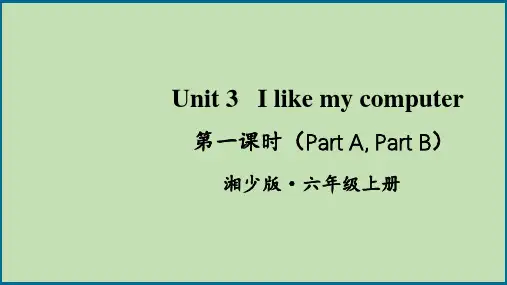
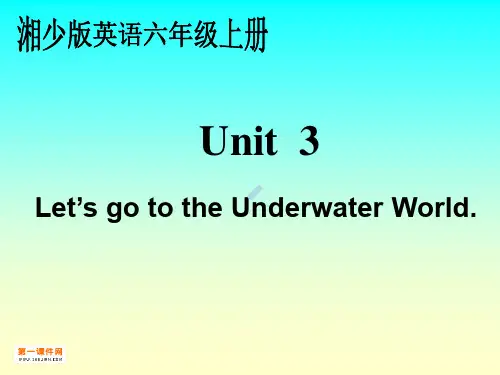
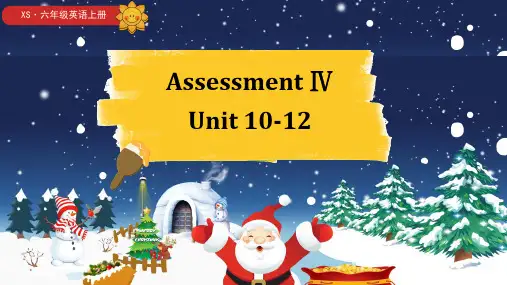
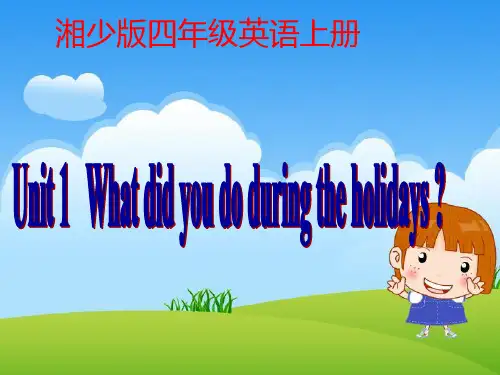
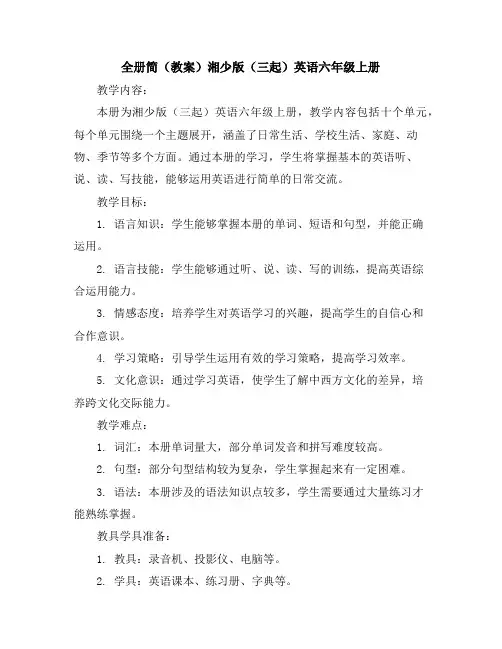
全册简(教案)湘少版(三起)英语六年级上册教学内容:本册为湘少版(三起)英语六年级上册,教学内容包括十个单元,每个单元围绕一个主题展开,涵盖了日常生活、学校生活、家庭、动物、季节等多个方面。
通过本册的学习,学生将掌握基本的英语听、说、读、写技能,能够运用英语进行简单的日常交流。
教学目标:1. 语言知识:学生能够掌握本册的单词、短语和句型,并能正确运用。
2. 语言技能:学生能够通过听、说、读、写的训练,提高英语综合运用能力。
3. 情感态度:培养学生对英语学习的兴趣,提高学生的自信心和合作意识。
4. 学习策略:引导学生运用有效的学习策略,提高学习效率。
5. 文化意识:通过学习英语,使学生了解中西方文化的差异,培养跨文化交际能力。
教学难点:1. 词汇:本册单词量大,部分单词发音和拼写难度较高。
2. 句型:部分句型结构较为复杂,学生掌握起来有一定困难。
3. 语法:本册涉及的语法知识点较多,学生需要通过大量练习才能熟练掌握。
教具学具准备:1. 教具:录音机、投影仪、电脑等。
2. 学具:英语课本、练习册、字典等。
教学过程:1. 导入:通过图片、歌曲、故事等形式,激发学生的学习兴趣,导入新课。
2. 新课内容展示:通过讲解、示范、练习等方式,使学生掌握新知识。
3. 练习:通过听、说、读、写的练习,巩固所学知识。
5. 作业布置:布置适量的作业,巩固所学知识。
板书设计:板书设计要简洁明了,突出重点,使学生一目了然。
可以采用表格、流程图等形式,帮助学生理解和记忆。
作业设计:1. 听力作业:听课文录音,完成相关练习。
2. 口语作业:模仿课文对话,进行角色扮演。
3. 阅读作业:阅读课文,回答相关问题。
4. 写作作业:根据课文内容,进行写作练习。
课后反思:1. 教学内容是否合适,是否需要调整。
2. 教学方法是否有效,是否需要改进。
3. 学生掌握情况如何,是否需要加强辅导。
4. 作业布置是否合理,是否需要调整。
在全册简(教案)湘少版(三起)英语六年级上册的教学设计中,教学难点是需要重点关注的细节。
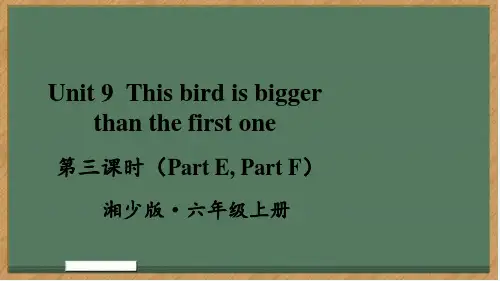
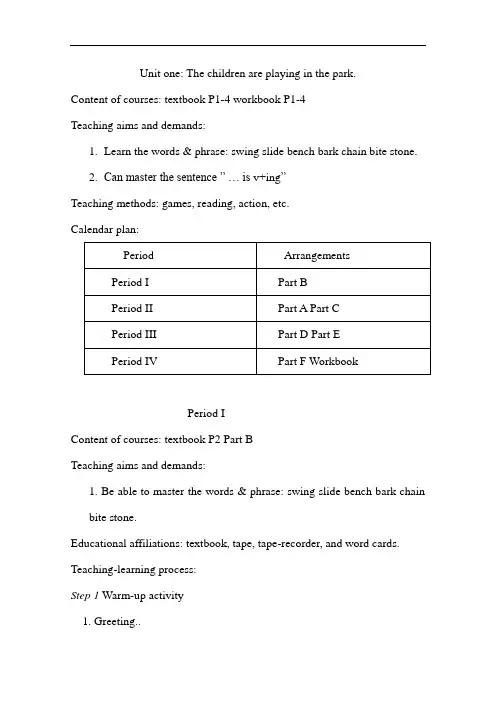
Unit one: The children are playing in the park.Content of courses: textbook P1-4 workbook P1-4Teaching aims and demands:1.Learn the words & phrase: swing slide bench bark chain bite stone.2.Can master the sentence ” … is v+ing”Teaching methods: games, reading, action, etc.Calendar plan:Period IContent of courses: textbook P2 Part BTeaching aims and demands:1. Be able to master the words & phrase: swing slide bench bark chainbite stone.Educational affiliations: textbook, tape, tape-recorder, and word cards. Teaching-learning process:Step 1 Warm-up activity1. Greeting..2. Let’s play: Look and guess: What is it?Step 2 Presentation & drill1. Learn to say: swingT draws a swing on Bb and help Ss understand the meaning. Read the sentence after T.2. Learn to say: slideT draws a slide on Bb and help Ss understand the meaning. Read the sentence after T.Learn to say: bench bark chain bite stone in the same way.3.Drill.⑴T shows the pictures and Ss say the words.⑵T shows the pictures quickly and Ss say the words.⑶A guessing game.4.Open the books at Page 2, listen to the tape and read after it.Step 3.Practice1. Practice in four. Ss play the cards.2. Listen & act.Step 4.ConsolidationTeacher’s notes:PeriodⅡContent of courses: textbook Part A Part CTeaching aims and demands:1.Be able to understand and tell the story.Educational affiliations: textbook, tape, tape-recorder, wordcards.Teaching-learning process:Step 1 Warm-up activity1.Exchange greetings.2.Sing a song we’ve learned last term together.Step 2 Presentation & drill1. Lead-in. T shows the picture of Part A. T says, “The children areplaying in the park. Listen to the tape. What are they talking about?”T writes the sentence on Bb and help Ss understand the meaning.Read the sentence after T.2. Ss talk about the picture.3. Drill. ⑴T shows the pictures and Ss rearrange them.⑵T shows the pictures and Ss tell the story.⑶A guessing game.4. Open the books at Page 1, listen to the tape and read after it.Step 3.Practice1. The sentences are not in the correct order. Rearrange them.2.Ss practice in four.3.A game——A competition among groups.Step 4.Consolidation1.Draw your favorite things and talk about them. Teacher’s notes:Period IIIContent of courses: textbook P3 Part D&ETeaching aims and demands:1.Be able to read and write the sentence ” … is v+ing”Educational affiliations: textbook, tape, tape-recorder, wordcards.Teaching-learning process:Step 1 Warm-up activity1.Exchange greetings.2.Sing a song we’ve learned last term together.Step 2 Practice1.Lead-in. T shows the picture of Part D. T says, “People are doingsomething today. Look at the pictures. What are they doing?”2.Pair work. Look at pictures. Describe what each person is doing.3.Write sentences about 5 of the above pictures.e.g. The boy is brushing his teeth.4.T writes the sentence on Bb and help Ss understand the meaning.Read the sentence after T.5.Ss describe the pictures.6.Open the books at Page 3, Ss write the sentences on the book.Step 3. Learn to singLondon BridgeStep 4.ConsolidationTeacher’s notes:Unit two: Katie always gets up early.Content of courses: textbook P5-8workbook P5-8Teaching aims and demands:5.Learn the words & phrase: wake up/ make the bed/ wave/ I’m late.6.Canuse the words always/ often/ usually/ never to describe theactivities.Teaching methods: games, reading, action, etc.Calendar plan:Period IContent of courses: textbook P6 Part BTeaching aims and demands:1. Be able to master the words & phrase: wake up/ make the bed/ wave/I’m late.Educational affiliations: textbook, tape, tape-recorder, and word cards. Teaching-learning process:Step 1 Warm-up activity1. Greeting..2. Let’s play: Look and guess: What is it?Step 2 Presentation & drill1. Learn to say: swingT draws a swing on Bb and help Ss understand the meaning. Read the sentence after T.2. Learn to say: waveT waves the arm and help Ss understand the meaning. Read the word after T.Learn to say: wake up/ make the bed/ I’m late.in the same way.7.Drill.⑴T shows the pictures and Ss say the words.⑵T shows the pictures quickly and Ss say the words.⑶A guessing game.8.Open the books at Page 6, listen to the tape and read after it.Step 3.Practice1. Practice in four. Ss play the cards.2. Listen & act.Step 4.ConsolidationTeacher’s notes:Period IIContent of courses: textbook Part A Part CTeaching aims and demands:1.Be able to understand and tell the story.Educational affiliations: textbook, tape, tape-recorder, wordcards.Teaching-learning process:Step 1 Warm-up activity1.Exchange greetings.2.Sing a song we’ve learned last term together.Step 2 Presentation & drill1. Lead-in. T shows the picture of Part A. T says, ”This is Katie’s Day.Listen to the tape. What dose she do?” T writes the sentence on Bb and help Ss understand the meaning. Read the sentence after T.2. Ss talk about the picture.3. Drill. ⑴T shows the pictures and Ss rearrange them.⑵T shows the pictures and Ss tell the story.⑶A guessing game.4. Open the books at Page 5, listen to the tape and read after it.Step 3.Practice1. Put a tick if the sentences are correct or a cross if they are wrong.2.Ss practice in four.3.A game——A competition among groups.Step 4.Consolidation1.Draw your favorite things and talk about them.Teacher’s notes:Period IIIContent of courses: textbook P3 Part D&ETeaching aims and demands:1.Be able to read and write the sentence with correct words: always/ often/ usually/ never.Educational affiliations: textbook, tape, tape-recorder, wordcards.Teaching-learning process:Step 1 Warm-up activity1.Exchange greetings.2.Sing a song we’ve learned last term together.Step 2Practice7.Lead-in. T shows the chart of Part D. T says, “Look at the chart. Taketurns to tell each other about Peter’s activities.”8.Pair work. Look at chart. Describe Peter’s activities.9.Make sentences about own activities..10.T writes the sentence on Bb and help Ss understand the meaning.Read the sentence after T.5. Open the books at Page 3, Ss write the sentences on the book6. Look and write. Mrs LI is a busy housewife. Look at the chart of her activities below. Then write suitable answers in the blanks.Step 4.ConsolidationTeacher’s notes:Unit three: Let’s go to the Underwater World.Content of courses: textbook P9-12workbook P9-12Teaching aims and demands:9.Learn the words & phrase: picnic, library, watch, science story10.C an master the sentence ” Let’s go to ….”Teaching methods: games, reading, action, etc.Calendar plan:Period IContent of courses: textbook P10 Part BTeaching aims and demands:1. Be able to master the words: picnic, library, watch, science story Educational affiliations: textbook, tape, tape-recorder, and word cards. Teaching-learning process:Step 1 Warm-up activity1. Greeting..2. Let’s play: Look and guess: What is it?Step 2 Presentation & drill1. Learn to say: picnicT help Ss understand the meaning. Read the word after T.2. Learn to say: libraryT help Ss understand the meaning. Read the word after T.Learn to say: watch science story in the same way.11.D rill.⑴T shows the pictures and Ss say the words.⑵T shows the pictures quickly and Ss say the words.⑶A guessing game.12.O pen the books at Page 10, listen to the tape and read after it. Step 3.Practice1. Practice in four. Ss play the cards.2. Listen & act.Step 4.ConsolidationTeacher’s notes:Period IIContent of courses: textbook Part A Part CTeaching aims and demands:1.Be able to understand and tell the story.Educational affiliations: textbook, tape, tape-recorder, wordcards.Teaching-learning process:Step 1 Warm-up activity1.Exchange greetings.2.Sing a song we’ve learned last term together.Step 2 Presentation & drill1. Lead-in. T shows the picture of Part A. T says, “The children aretalking. Listen to the tape. What are they talking about?” T writes the sentence on Bb and help Ss understand the meaning. Read the sentence after T.2. Ss talk about the picture.3. Drill. ⑴T shows the pictures and Ss rearrange them.⑵T shows the pictures and Ss tell the story.⑶A guessing game.4. Open the books at Page 9, listen to the tape and read after it.Step 3.Practice1.Fill the blanks with the correct words.Go/ and/ did/ was/ home listYesterday ---------a holiday. The children wanted to -----------out.They did not want to stay at --------------. Peter wrote a -----------in hisnotebook. The children had many ideas.They talked ----------- talked. It was very late in the afternoon.They------------- nit go out. They stayed at home all day!2.Ss practice in four.3.A game——A competition among groups.Step 4.ConsolidationTeacher’s notes:Period IIIContent of courses: textbook P10 Part D&ETeaching aims and demands:1.Be able to read and write the sentence ” Let’s go to….”Educational affiliations: textbook, tape, tape-recorder, word cards.Teaching-learning process:Step 1 Warm-up activity1.Exchange greetings.2.Sing a song we’ve learned last term together.Step 2 Practice11.L ead-in. T shows the picture of Part D. T says, “What are these p lace?12.P air work. Look at pictures. Say the words of the pictures.13.T writes the words on Bb and help Ss understand the meaning. Readthe sentence after T.14.S ay the felling words..15.M ake the sentences.e.g. I’m hungry. Let’s go to the restaurant.16.O pen the books at Page 11. Ss write the sentences on the book.Step 3.ConsolidationTeacher’s notes:Unit four: It’s the Mid-Autumn FestivalContent of courses: textbook P1316workbook P13-16Teaching aims and demands:13.L earn the words & phrase: egg yolk/moon cake/ grapes/ tea14.B e able to master the knowledge of the Mid –Autumn Festival. Teaching methods: games, reading, action, etc.Calendar plan:Period IContent of courses: textbook P14 Part BTeaching aims and demands:1. Be able to master the words & phrase: egg yolk/moon cake/ grapes/teaEducational affiliations: textbook, tape, tape-recorder, and word cards. Teaching-learning process:Step 1 Warm-up activity1. Greeting..2. Let’s play: Look and guess: What is it?Step 2 Presentation & drill1. Learn to say: egg yolkT takes out an egg and help Ss understand the meaning. Read the sentence after T.2. Learn to say: moon cakeT takes out a moon cake and help Ss understand the meaning. Read the word after T.Learn to say: grapes/ tea/in the same way.15.D rill.⑴T shows the pictures and Ss say the words.⑵T shows the pictures quickly and Ss say the words.⑶A guessing game.16.O pen the books at Page14, listen to the tape and read after it.Step 3.Practice1. Practice in four. Ss play the cards.2. Listen & act.Step 4.ConsolidationTeacher’s notes:Period IIContent of courses: textbook Part A Part CTeaching aims and demands:1.Be able to understand and tell the story.Educational affiliations: textbook, tape, tape-recorder, wordcards.Teaching-learning process:Step 1 Warm-up activity1.Exchange greetings.2.Sing a song we’ve learned last term together.Step 2 Presentation & drill1. Lead-in. T shows the picture of Part A. T says, ”Long, long ago, therewas a girl called Chang’e. Do you know her story? Do you know the Mid-Autumn Festival?” T writes the sentence on Bb and help Ss understand the meaning. Read the sentence after T.2. Ss talk about the picture.3. Drill. ⑴T shows the pictures and Ss rearrange them.⑵T shows the pictures and Ss tell the story.⑶A guessing game.4. Open the books at Pag13, listen to the tape and read after it.Step 3.Practice2.Ss practice in four.3.A game——A competition among groups.Step 4.Consolidation1.Draw something about Mid-Autumn Festiva and talk about them. Teacher’s notes:Period IIIContent of courses: textbook P15Part D&ETeaching aims and demands:1.Be able to understand and say the short passage, answer thequestions below, then write the answers on the book.2.Role-play the story.Educational affiliations: textbook, tape, tape-recorder, wordcards.Teaching-learning process:Step 1 Warm-up activity1.Exchange greetings.2.Sing a song we’ve learned last term together.Step 2Practice17.L ead-in. T shows the picture of Part E. T says, “The family celebratethe festival today. Listen to the tape. What are they doing?”18.L isten to the tape, number the sentences.19.T writes the sentence on Bb and help Ss understand the meaning.Read the sentence after T.20.S s say something about the picture.21.O pen the books at Page 3, listen to the tape and read after it.22.F ill in the blanks with suitable words.Step 4.ConsolidationTeacher’s n otes:Unit five: The children are playing noisily.Content of courses: textbook P17-20 workbook P17-20Teaching aims and demands:17.L earn the words & phrase: phone/ loudly/quietly/ noisily.18.C an master the sentence ”Don’t …”Teaching methods: games, reading, action, etc.Calendar plan:Period IContent of courses: textbook P17 Part BTeaching aims and demands:1. Be able to master the words: phone/loudly/quietly/noisily. Educational affiliations: textbook, tape, tape-recorder, and word cards. Teaching-learning process:Step 1 Warm-up activity1. Greeting..2. Let’s play: Look and guess: What is it?Step 2 Presentation & drill1. Learn to say: swingT takes out a phone and help Ss understand the meaning. Read the sentence after T.2. Learn to say: loudlyT draws a slide on Bb and help Ss understand the meaning. Read the sentence after T.Learn to say: quietly/ noisily in the same way.19.D rill.⑴T shows the pictures and Ss say the words.⑵T shows the pictures quickly and Ss say the words.⑶A guessing game.20.O pen the books at Page 2, listen to the tape and read after it.Step 3.Practice1. Practice in four. Ss play the cards.2. Listen & act.Step 4.ConsolidationTeacher’s notes:Period IIContent of courses: textbook Part A Part CTeaching aims and demands:1.Be able to understand and tell the story.Educational affiliations: textbook, tape, tape-recorder, wordcards.Teaching-learning process:Step 1 Warm-up activity1.Exchange greetings.2.Sing a song we’ve learned last term together.Step 2 Presentation & drill1. Lead-in. T shows the picture of Part A. T says, “The children areplaying in the living room. Listen to the tape. What are they talking about?” T writes the sentence on Bb and help Ss understand the meaning. Read the sentence after T.2. Ss talk about the picture.3. Drill. ⑴T shows the pictures and Ss rearrange them.⑵T shows the pictures and Ss tell the story.⑶A guessing game.4. Open the books at Page 1, listen to the tape and read after it.Step 3.Practice1.Answer the questions.They are ---------------------------.3.How is Dongdong playing?He-------------------------------------.4.Who is talking loudly?-----------------------------------------.2.Ss practice in four.3.A game——A competition among groups.Step 4.ConsolidationTeacher’s notes:PeriordⅢContent of courses: textbook P3 Part D&E&FTeaching aims and demands:1.Be able to read and write the sentence ”Don’t …”Educational affiliations: textbook, tape, tape-recorder, word cards.Teaching-learning process:Step 1 Warm-up activity1.Exchange greetings.2.Sing a song we’ve learned last term together.Step 2 Practice23.L ead-in. T shows the picture of Part D. T says, “People are sayingtoday. Look at the pictures. What are they saying?”24.P air work. Look at pictures. Describe what each person is saying.25.W rite sentences about 5 of the above pictures.e.g. Play quietly.Don’t play noisily.26.T writes the sentence on Bb and help Ss understand the meaning.Read the sentence after T.27.S s describe the pictures.28.O pen the books at Page 18, Ss write the sentences on the book.Step 3. Learn to singRow row row your boatStep 4.ConsolidationTeacher’s notes:Unit six: How tall are youContent of courses: textbook P21-24 workbook P21-24Teaching aims and demands:1.Learn the words: weak/ worried/ light/ heavy.2.Can master the sentence ”How old/tall/heavy are you?” andanswers.Teaching methods: games, reading, action, etc.Calendar plan:Period IContent of courses: textbook P2 Part BTeaching aims and demands:1.Be able to master the words: weak/ worried/ light/ heavy Educational affiliations: textbook, tape, tape-recorder, and word cards. Teaching-learning process:Step 1 Warm-up activity1. Greeting..2. Let’s play: Look and guess: What is it?Step 2 Presentation & drill1. Learn to say: weakT puts hands on the head and feels sick and help Ss understand the meaning. Read the sentence after T.2. Learn to say: worriedT asks what your mother felt when you were sick and help Ss understand the meaning. Read the sentence after T.Learn to say: light/ heavy in the same way.3.Drill.⑴T shows the pictures and Ss say the words.⑵T shows the pictures quickly and Ss say the words.⑶A guessing game.4.Open the books at Page 2, listen to the tape and read after it.Step 3.Practice1. Practice in four. Ss play the cards.2. Listen & act.Step 4.ConsolidationTeacher’s notes:Period IIContent of courses: textbook Part A Part CTeaching aims and demands:1.Be able to understand and tell the story.Educational affiliations: textbook, tape, tape-recorder, wordcards.Teaching-learning process:Step 1 Warm-up activity1.Exchange greetings.2.Sing a song we’ve learned last term together.Step 2 Presentation & drillLead-in. T acks as a doctor and takes out a talbe asks:How old are you?/ How tall are you?/How heavy are you?T writes the sentence on Bb and help Ss understand the meaning. Read the sentence after T.2. Ss talk about the picture.3. Drill. ⑴T shows the pictures and Ss rearrange them.⑵T shows the pictures and Ss act the dialouge.⑶A guessing game.4. Open the books at Page 1, listen to the tape and read after it.Step 3.Practice1. Give short answers to these questions.What’s the matter with you?I'm______________.How old are you?I’m_________________.How tall are you?I'm____________________.How heavy are you?I’m_____________________.2.Ss practice in four.3.A game——A competition among groups.Step 4.Consolidation1.Draw your favorite things and talk about them.Teacher’s notes:Period IIIContent of courses: textbook P3 Part D&ETeaching aims and demands:1.Be able to read and write the sentence ” How old/tall/heavy areyou?”and answersEducational affiliations: textbook, tape, tape-recorder, wordcards.Teaching-learning process:Step 1 Warm-up activity1.Exchange greetings.2.Sing a song we’ve learned last term together.Step 2 Practice29.L ead-in. T asks the following questions:How old/tall/heavy are you?Pair work. Look at pictures. Ask each other questions.Write down the answers.30.A suvey: ExtensionHow heavy is your bag?How long is your arm?...31.T writes the sentence on Bb and help Ss understand the meaning.Read the sentence after T.32.L et’s ask and writeLook at the chart. Ask three of your classmates questions. Write short sentences to describe them.33.O pen the books at Page24, Ss write the sentences on the book.Step 3.ConsolidationTeacher’s notes:Unit seven: These horns are too big. Content of courses: textbook P25-28 workbook P25-28 Teaching aims and demands:5.Learn the words: foolish/ bull/ horn/ kill/ rubbed.6.Can master the sentence ”Can you … ?” and answers. Teaching methods: games, reading, action, etc.Calendar plan:Period IContent of courses: textbook P2 Part BTeaching aims and demands:1. Be able to master the words: foolish/ bull/ horn/ kill/ rubbed. Educational affiliations: textbook, tape, tape-recorder, and word cards. Teaching-learning process:Step 1 Warm-up activity1. Greeting..2. Let’s play: Look an d guess: What is it?Step 2 Presentation & drill1. Learn to say: bullT draws a bull on Bb and help Ss understand the meaning. Read the sentence after T.2. Learn to say: hornT draws a horn on Bb and help Ss understand the meaning. Read the sentence after T.Learn to say: kill/ rubbed in the same way.7.Drill.⑴T shows the pictures and Ss say the words.⑵T shows the pictures quickly and Ss say the words.⑶A guessing game.8.Open the books at Page 2, listen to the tape and read after it.Step 3.Practice1. Practice in four. Ss play the cards.2. Listen & act.Step 4.ConsolidationTeacher’s notes:Period IIContent of courses: textbook Part A Part CTeaching aims and demands:1.Be able to understand and tell the story.Educational affiliations: textbook, tape, tape-recorder, wordcards.Teaching-learning process:Step 1 Warm-up activity1.Exchange greetings.2.Sing a song we’ve learned last term together.Step 2 Presentation & drill1.Lead-in. T shows the pictu re of Part A. T says, “This is a lionThis is a bull. Listen to the tape. What are they talking about?” T writes the sentence on Bb and help Ss understand the meaning. Read the sentence after T.2. Ss talk about the picture.3. Drill. ⑴T shows the pictures and Ss rearrange them.⑵T shows the pictures and Ss tell the story.⑶A guessing game.4. Open the books at Page 1, listen to the tape and read after it. Step 3.Practice1. Give short answers to these questions.Where was the bull?The bull was --------------------.What did the lion want to do to the bull?The lion wanted to --------------------------------.What did the lion say to the bull?The lion told the bull that his horns were---------------------. What did the bull do?The bull rubbed--------------------------.2.Ss practice in four.3.A game——A competition among groups.Step 4.Consolidation1.Draw your favorite things and talk about them. Teacher’s notes:Period IIIContent of courses: textbook P3 Part D&ETeaching aims and demands:1.Be able to read and write the sentence ” Can you…?”and answers Educational affiliations: textbook, tape, tape-recorder, wordcards.Teaching-learning process:Step 1 Warm-up activity1.Exchange greetings.2.Sing a song we’ve learned last term together.Step 2 Practice34.L ead-in. T shows the picture of Part D. T says, “People are doingsomething today. Look at the pictures. What are they doing?”35.P air work. Look at pictures. Draw lines to match each picture to whatthe children are saying.36.L ook at the pictures of Part D and answer questions about each ofthese things.37.T writes the sentence on Bb and help Ss understand the meaning.Read the sentence after T.38.S s answer the questions.39.O pen the books at Page27, Ss write the sentences on the book.Step 3.ConsolidationTeacher’s notes:Unit 8 My singing is louder than yours.Period 1Teaching aims and demands:1.Be able to listen and say the new sentence pattern.2.Learn to say new words3.Do part C.Teaching main and difficult points:1.bigger smaller2.John is thinner than Tony and Alan.3.Alan is taller than John but he is shorter than Tony.Teaching tools:1.Tape recorder2.Some picturesTeaching steps:Step1. Organization of class1.Greetings:2.Warm-up activities:T: Hello, boys and girls, nice to see you.Now let’s listen and do.Run/ walk/ play/ eat/ drink/ sing/ dance…How do you feel when you sing and dance?Ss will say the word ”happy”.T: Don’t run/ Don’t walk/ don’t play…How do you feel when you are not allowed to do these things?Ss will say sad or angry.T teaches the words: angry pleasedStep2. Presentation1.T shows 2 apples: Look! This apple is bigger and that apple is smaller.One do you like?2.Ss learn to say : bigger smaller3.T: right;. Look! The garden is bigger and the hole is smaller. But who istaller? Let’s see.4.T shows pictures of John, Tony , and Alan.Ss learn to say : Tony is taller than John and Alan.Alan is taller than John .John is thinner than Tony and Alan.5.Ss make sentences with words: bigger smaller taller6.T: big and small are antonyms. Can you give me more antonyms?moon?7.Ss give out more antonyms and make sentences with them.8.Ss read the sentences in Part D and do it by themselves.?What are the boy and girl talking about?T sums up the new sentence pattern of comparative sentence.s tep3: Practice:1.Let’s play a gameT: There are some antonyms in the box .Try to say a comparative sentence with them.Ss take turns to pick out the word then say a sentence about them.Ss read and write these words.2.Listen to the tape and read after the tape.Ss do part D by themselves.Step4: Writing:Writing on the blackboard:bigger smaller tallerTony is taller than John and Alan.(Period 2)Teaching aims and demands:4.Be able to listen and say Part A\B5.Learn to say the words.6.Understand and act the storyTeaching difficult points:4.The bigger bird always pushed the smaller bird away and ate most of thefood, leaving only a little for the smaller bird.5.The smaller bird sang softer and softer.Teaching tools:3.Tape recorder4.Some picturesTeaching steps:Step1. Organization of class3.Greetings:4.Warm-up activities:T: Let’s listen and do.Long-short tall-short fat-thin younger-old big-smallSs review words:garden hole smaller bigger taller thinner fatter Step2. PresentationSs look at picture1 and answer questions:1.Where did the 2 birds live?2.What was their difference?Ss read sentences of picture 1.T teaches picture2:What did the bigger bird say ?What did the bigger bird always do?Did the bigger bird do the right thing ? Why??T teaches Picture3:What happened to the little bird?What did the girl want to do?T teach Picture 4:Where did the girl put the food?What was on the box?Could the bigger bird get the food? Why it couldn’t?What did the bird do then?T teaches picture5How did the girl feel ?What did the girl say?Ss answer these questions and read the story.Step3: Practice:T: Let’s open books and turn to page32.Ss tick the correct sentences according to the story.T checks the answers:1.The girl fed the birds.2.The bigger bird ate most of the food.3.The smaller bird sang louder than the bigger bird.4.The bigger bird could not get the food from the box.Step4: Writing:Writing on the blackboard:Unit8 My singing is louder than yours..One bird was smaller than the other.The bird sang softer and softer.The smaller bird could get the food.Unit8 My singing is louder than yoursPeriod 3Teaching aims and demands:7.Be able to understand the story in Part A.8.Finish the excises of Part F.Teaching difficult points:6.Learn to use new sentences freely.。
